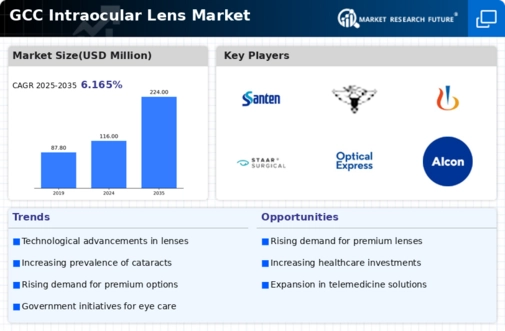The GCC Intraocular Lens Market has witnessed significant advancements and a dynamic competitive landscape in recent years. This market is characterized by the presence of key players striving to innovate and enhance the quality of products to meet the increasing demand for cataract surgeries and vision correction procedures in the Gulf Cooperation Council region.
The growing prevalence of age-related eye disorders, coupled with a rise in disposable income and heightened healthcare awareness among the population, has further propelled the growth of intraocular lenses. Competitive strategies among market players include diversifying product lines, collaborating with healthcare providers, and investing in research and development to introduce state-of-the-art solutions that cater to the needs of ophthalmic surgeons and patients alike.
Santen Pharmaceutical has established a solid foothold in the GCC Intraocular Lens Market, leveraging its expertise in ophthalmology. The company is recognized for its commitment to developing high-quality, innovative products designed to address various ocular conditions. The strengths of Santen Pharmaceutical lie in its robust research capabilities and a strategic focus on enhancing patient outcomes.
The company benefits from a broad product portfolio that includes advanced intraocular lenses, which have gained acceptance due to their proven efficacy and reliability. Additionally, Santen Pharmaceutical's strong distribution network in the GCC ensures accessibility of its products across key markets, allowing it to build enduring relationships with healthcare providers and institutions in the region.
Eagle Vision has made notable strides in the GCC Intraocular Lens Market through strategic initiatives and a keen focus on product development. The company offers a range of intraocular lenses tailored to meet the demands of diverse patient populations, ensuring that its key products align with the latest technological advancements in the field.
Eagle Vision's market presence is reinforced by its commitment to quality and patient satisfaction, supported by its dedicated research and development efforts. The company has also explored opportunities for mergers and acquisitions to bolster its offerings and expand its operational capabilities within the region.
By positioning itself as a reliable partner to ophthalmic professionals, Eagle Vision aims to further enhance its standing in the GCC market while continuing to deliver innovative solutions that address the evolving needs of patients and healthcare systems.






















Leave a Comment